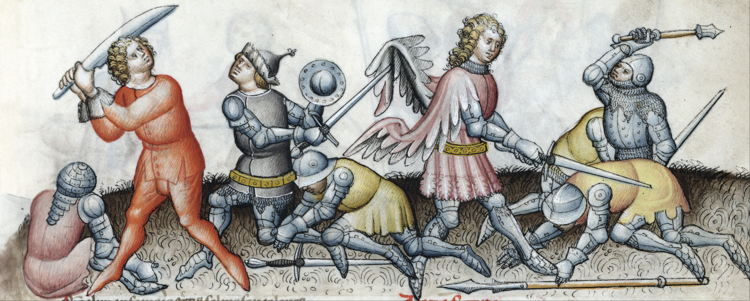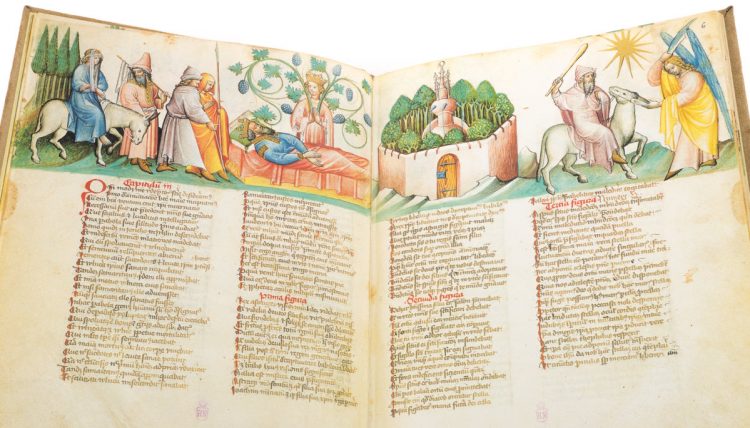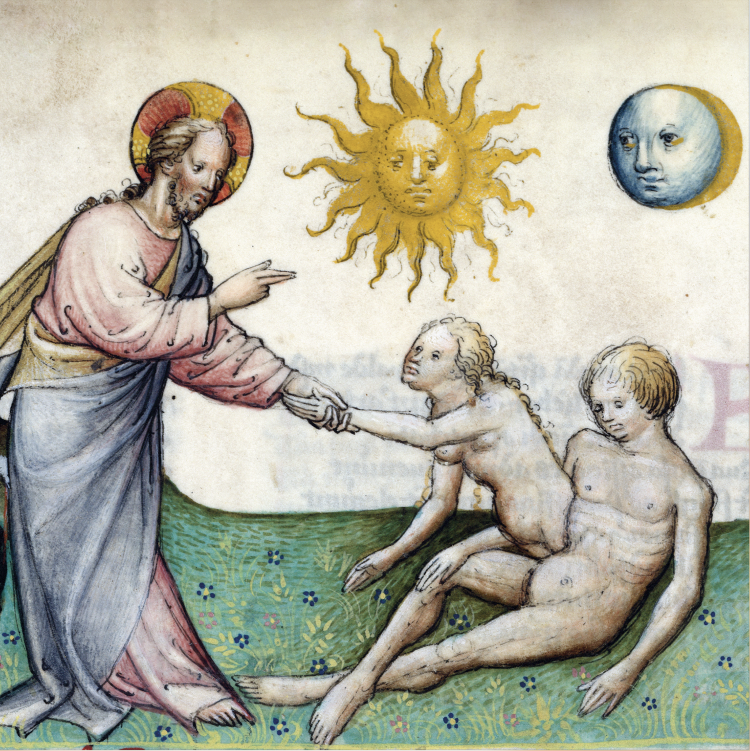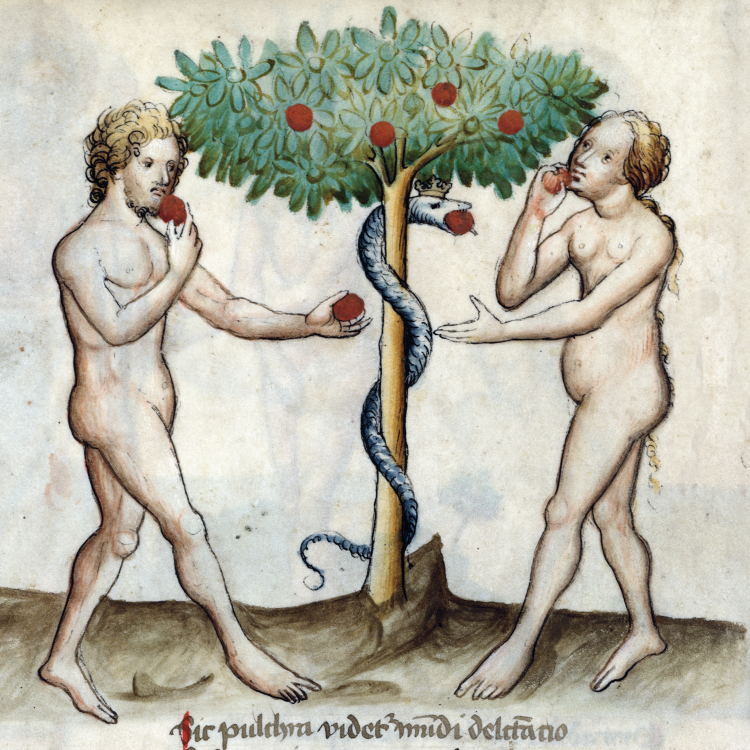Let’s take a peek at an upcoming facsimile, disclosed at the 2019 Frankfurt Book Fair: the Speculum Humanae Salvationis, one of the most popular illustrated works of the Middle Ages.

In 2020, CM Editores will delight manuscript enthusiasts by making one of the most widely-circulated medieval books available for purchase as a facsimile. The codex, kept under lock and key in the National Library of Spain in Madrid, encloses over 250 miniatures and dozens of lines of rhyming Latin text in Gothic style.
The Speculum Humanae Salvationis is among the most frequent books found as an illuminated manuscript in the Middle Ages, and was also published in the form of blockbook and incunabulum in later centuries.
Yet, the author remains unknown. For many decades the work was attributed to Vincent of Beauvais (c. 1184/1194 – c. 1264) a French Dominican friar at the monastery of Royaumont Abbey in the north of France, because traits of the Dominican spirituality were found in the text. Today, a large part of scholars identifies Ludolph of Saxony (c. 1295 – 1378) as the author. Ludolph, a German Roman Catholic theologian, is best known for his Vita Christi (Life of Christ), which contains text portions that mirror exactly the Speculum Humanae Salvationis.
Mirrors of Human Salvation continued to be made all over Europe until the sixteenth century. Around 1330, the Benedictine Abbey of Kremsmünster, Austria, crafted the first bilingual version with Latin and abridged German text. The characters are left in the same hue as the parchment and contrast with the red or blue backgrounds, creating a sort of medieval picture Bible. About a century later, an unusually lavish version, with 176 colored pen-and-ink drawings resembling copper engravings, appeared in France or the Netherlands. The manuscript, preserved in the Einsiedeln Abbey in Switzerland, features astonishing borders decorated with abundant foliage.
The purpose of Speculum literature – speculum is Latin for “mirror” – was to provide readers with a summary of Christian doctrine, while proving the connection between the Old and New Testaments, according to the Medieval theory of typology. Speculum manuscripts were highly structured: each chapter was contained in a two-page opening with four columns, the first one dedicated to an episode from the Old Testament, and the remaining three to related events from the New Testament, thus testifying to the consequentiality of the Bible.

Throughout the centuries, the Latin word “speculum” was used for written works on the most diverse realms of life: alchemy (Speculum alchimiae), law (Speculum iuris), religion (Speculum ecclesiae), and even satire – Speculum stultorum, the “Mirror of fools”, written by Nigel de Longchamps in 12th-century England. Speculum manuscripts were so rich in religious scenes they served as models for illustrators looking for inspiration when designing books of hours, another very popular genre of Christian literature.





